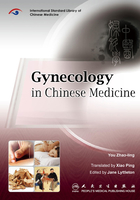
上QQ阅读APP看书,第一时间看更新
Preface
Nowadays, the prospect of traditional Chinese medicine (TCM) on the international stage is quite promising. Under the guidance of World Federation of Chinese Medicine Societies (WFCMS) and World Federation of Acupuncture-Moxibustion Societies (WFAMS), it has come step by step to the track of standardization and normalization. But the dilemma is that the overseas TCM education has long been in need of standardized and normalized English teaching materials. If this problem could not be solved appropriately, the development of TCM would be impeded all over the world.
So after much investigations and discussions by WFCMS, WFAMS and People’s Medical Publishing House on the status of the overseas TCM education and with the approvals of the textbook office in the Ministry of Health and the Publishing Cooperation Center for Book and Magazine Translation and Publication in World Health Organization, the compilation program of an internationally standardized and normalized English textbook has been officially launched.
The purpose is to issue an English TCM textbook overseas, which not only possesses top quality and high academic levels, but also conforms to the international demands on the TCM education. The significance lies in the popularization of TCM, which includes introducing the domestic situation and competent personnel of TCM to other countries and enhancing its influence all over the world.
Gynecology of Chinese Medicine (GCM) takes the characteristics of its overseas education into full account and draws on the experience and lessons of the exploring English textbooks in this aspect. Its Chinese manuscript is under the general editorship of Prof. You Zhao-ling who is the Chairperson of the Gynecology Committee of China Association for TCM and Prof. Lei Lei. Xiao Ping has taken charge of the Chinese-to-English translation, and the English version is edited chiefly by Jane Lyttleton from Australia.
The compilation of the Chinese manuscript is joined by eighteen experts, all of whom have been engaged in GCM education and clinical treatment for years. According to the training objectives of clinical GCM, this book will embody “three basics” (basic theories, basic knowledge, basic techniques),“ three specifics”(specific targets-overseas doctors and students who will undertake clinical TCM after graduation; specific requirements-guidelines for the prevention-oriented public health worker; specific limitations-word counts tailored to classroom hours) and“five levels” (ideological level, scientific level, creative level, progressive level, applicative level ). The compilation of this book will draw on the advantages and disadvantages of domestic textbooks, combine the practices of clinical treatment, summarize relevant experience carefully, and construct the general frame so as to meet the international requirements for clinical GCM.
The entire book is made up of two major parts, the general discussion and specific individual discussions, amounting to eleven chapters, fifty-five sections, and over thirty thousand words. The general discussion accounts for six chapters, including the preface, female physiology, female pathology, the diagnoses of gynecological diseases, the treatments of gynecological diseases, and gynecological diseases prevention and hygiene. Specific discussions introduce fifty types of gynecological conditions, ranging from menstruation, leukorrhea, pregnancy and postpartum conditions and other miscellaneous diseases. All the descriptions will be conducted in ten aspects: overview, etiology and pathogeneses, diagnoses and differential diagnoses, pattern-based treatments, treatments of acupuncture and moxibustion and others, prognoses, prevention and nursing, case discussion and acupuncture and moxibustion cases. The overview part includes definitions, characteristics and categories; etiology and pathogeneses are depicted in the form of flow charts convenient for memorization; diagnoses consist of medical histories, clinical manifestations and examinations; treatments consist of pattern identification essentials, therapeutic principles, and pattern-oriented treatments which, along with the acupuncture and moxibustion treatments; case discussion includes the abstracts of cases (chief complaint and history of the present illness)and the analyses of diagnoses and treatments (personal opinions on diagnosis, differentiation from other diseases and original treatment). A Prescription Index is also appended to the book.
The Chinese manuscript of this book is accomplished through the cooperation of the entire compiling group: General discussion is by Yang Zheng-wang, Lei Lei, You Zhao-ling; menstrual diseases by the Fu Ling-mei, Liang Huizhen, Liu Wen-e, He Bing, Lai Mao-hua, Qin Mingchun, You Zhao-ling and Lei Lei; leukorrhea diseases are by Zhou Fang and You Zhao-ling; pregnancy diseases are by Yin Xiang-hua, Tang Zhan-wang, Qing Chun-ming and Lei Lei; postpartum diseases are by Zeng Jing, Wu Juan-juan, Zhou Fang and You Zhaoling; miscellaneous diseases are by Zhou Fang, You Zhao-ling, Ding Zheng-xiang, Fu Ling-mei, and Lei Lei; the index of fomulas is by Deng Jing-ying; acupuncture treatments are by Yang Qian-yun; cases of acupuncture treatments are by Lei Lei; finally, all of the writings will come to You Zhao-ling and Lei Lei for final examination and approval.
Here, we’d like to express my heartfelt thanks to Liu Shui, Vice-Director of International TCM Publications of People’s Medical Publishing House, and Zeng Chun, the project manager.
The standardized English GCM textbook is quite different from Western books on the subject in terms of its content and arrangement, so there may be some places in need of improvement. We sincerely hope that in use of this textbook, that teachers, students and colleagues will not hesitate to provide valuable criticism and suggestions so as to improve our work and make a better contribution to the development of TCM education around the world.
You Zhao-ling
Xiao Ping
April 2014